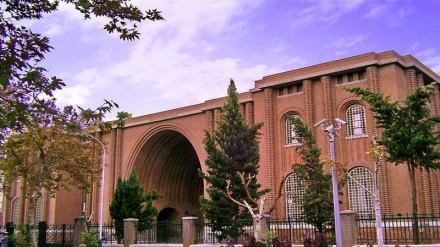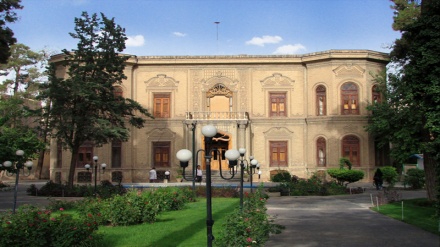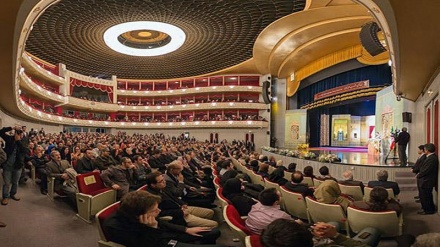Iran Your Attractive Destination (202)
Welcome to the 202nd episode of the series Iran Your Attractive Destination. Today, we get familiar with the city of “Shahr-e Rayy”.
As a reminder, it was said that Tehran Province is comprised of sixteen cities. The city of Shahr-e Rayy maintains an age-old history and has experienced many upheavals. In accordance to archeological studies, the history of this city dates back to more than 8,000 years ago. Shahr-e Rayy has been recognized as one of the largest centers of civilization around the world.
The city of Shahr-e Rayy is bound to Tehran from the north; cities of Islamshahr, Robat Karim, and Zarandieh, from the west, cities of Varamin and Pakdasht from the east, and the holy city of Qom from the south. Shahr-e Rayy is situated on the southern plains of Tehran and maintains a moderate climate. It maintains a geographical significance, given that it is located within a fertile land, engulfed by mountains and desert. In ancient times, this city bridged western and eastern Iran.
Generally speaking, Shahr-e Rayy is currently an agricultural region. The presence of several towns in the vicinity of the city of Shahr-e Rayy has excluded this city from the list of agricultural hubs and has turned this region into an industrial-agricultural region.
The lands of the city have taken shape from the alluvia of southern foothills of Tochal altitudes in northern Tehran and the alluvia surrounding Arad Mountain. These lands are fed by the aqueducts and channels which are further branched around the downstream of River Karaj.
Currently, Shahr-e Rayy, alongside Tehran, is one of the important regional scientific and religious centers, thanks to the presence of the Holy Shrine of Hazrat Abdul-Azim Hassani (AS), who is one of the descendants of the Prophet of Islam, Mohammad (Blessings of God upon him and his progeny). Moreover, the Holy Shrine of Imamzadeh Abdullah (AS), and the Tomb of Sheikh Sadouq, the renowned exegete of Holy Quran, are two of the other historical and religious sites of the city of Shahr-e Rayy; the history of each of which dates back to several centuries ago.
Historically, the ancient city of Shahr-e Rayy can be named as one of the cradles of Iran’s civilization. The items unearthed in the ancient sites of this city, which belong to 5th and 4th Centuries BC, show this city as one of the first centers of civilization in Iran’s Plateau.
In the book of Zoroastrians, Avesta, in regards to entry of Aryans to Iran’s Plateau and their terms of settlements, sixteen lands have been named, including the city of Rayy. In the age of Medes, Rayy was known as Maad-e Raazi. Among the works of art which have remained from the Achaemenian era, Shahr-e Rayy has been named on a number of occasions. Moreover, the inscriptions remaining from that period of time have also mentioned the name of this city. For instance, the Achaemenian King, Darius, in one of his inscriptions has mentioned Shahr-e Rayy under the name of Rega, which proves the importance of this city in that period of time. Shahr-e Rayy also progressed and developed in the Parthian era. As it is said, this city was the place of residence of Parthian kings in the spring season.
Throughout ancient times, a devastating earthquake shook Shahr-e Rayy and leveled it to the ground. This city was rebuilt as of 312 BC to 280 BC. However, the present day city of Shahr-e Rayy was built in the Sassanid era.
Throughout the Sassanid era, this city hugely progressed. At the beginning of Islam’s influence in Iran, Shahr-e Rayy was a large city, and upon the acceptance of sacred religion of Islam by Iranians, this city advanced and developed more than ever.
Historians and geographers have written many articles on the vastness of the city of Shahr-e Rayy in the pre- and post-Islamic eras. For instance, a Greek author of 1st Century AD, Isidore of Charax, noted that Shahr-e Rayy is larger than the other cities of Medes era.
The ancient city of Shahr-e Rayy resembled other magnificent ancient cities such as Babylon in regard to grandeur.
The cultural and historical background of the city of Shahr-e Rayy dates back to 3rd Millennium BC.
The historical city of Rayy was located en route Silk Road, which connected the eastern-most and western-most regions of the world in ancient times. Hence, it was home to a blend of ideas and beliefs. Many ruling systems, dynasties, and military powers kept an eye on this city; given its huge wealth and strategic importance.
Upon the advent of Islam, and conquest of the city of Shahr-e Rayy in 22 AH, the regional people gradually converted to the sacred religion of Islam. Thereafter, the ruling caliphs paid especial attention to this city.
In the year 141 AH, the Abbasid Caliph, Mansour, sent his son, Mohammad, to confront the ruler of Khorasan, who had rebelled against the Abbasid caliph. In this mission, Mohammad resided in Shahr-e Rayy, sending troops to fight in Khorasan. He remained in Shahr-e Rayy till 144 AH. He once again traveled to Shahr-e Rayy in 146 AH, and settled there till 151 AH. Thereafter, he returned to Baghdad. During those years, the plan for development of Baghdad was underway. Meanwhile, Mohammad Abbasi considered Shahr-e Rayy appropriate for development and made efforts to this end.
The well-known traveler of 7th Century AH, Yaqut Hemavi, in his signature book has also referred to the development of Shahr-e Rayy in that period of time.
The significant growth and development of Shahr-e Rayy commenced as of 4th Century AH. Upon the empowerment of Bouyad Dynasty, further importance was attached to this city. In fact, throughout the Bouyad era; Shahr-e Rayy was the political and cultural center of this dynasty, which led to promotion of science and literature in this city. One of the prominent cultural and political figures of Bouyad Dynasty was the Vizier, Saheb bin Ebad. He was highly interested in sciences. More than 120,000 volumes of books existed in his library.
The Iranologist, Arthur Pope, in one of his books, has pointed out that the number of books in the library of this vizier equaled the total number of books that existed across Europe in 10th Century AD.
MR/ME


